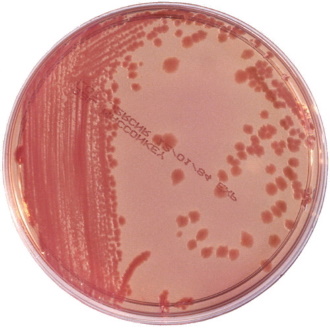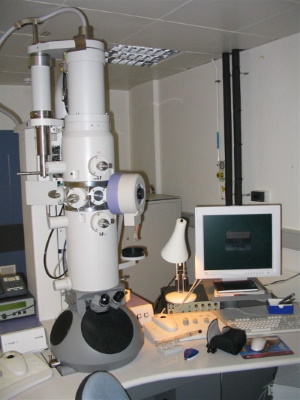Microbes (short for microorganisms) are tiny living things, too small to be seen by the naked eye, that are all around us and even inside of us. Some microbes are friendly, even helpful, while other microbes can kill. There are several major types of microbes, bacteria, fungi, algae, protozoa, and viruses.
Bacteria

Image Courtesy: National Human Genome Research Institute genome.gov.
Bacteria are single celled microbes. The cell structure is simpler than that of other organisms as there is no nucleus or other complex cellular structure. Bacteria are found almost everywhere on Earth and some can live under extreme conditions of temperature and pressure.
The human body is full of bacteria, and in fact is estimated to contain more bacterial cells than human cells. A human body consists of about ten quadrillion human cells, but is host to about 100 quadrillion bacterial cells. Most bacteria in and on the body are harmless, and some are even helpful. A relatively small number of species cause disease.
A healthy human has about one trillion bacteria feeding on the about ten billion flakes of skin shed every day, along with the oils and minerals that seep out of every pour and crevice on the skin. There are about 100,000 bacteria on every square centimeter of human skin.
Along with those, there are trillions more bacteria on your hair, in the fluid of your eyes, in your nasal passages, and feeding on the food particles in your mouth, tongue, and enamel of your teeth. About 100 trillion bacteria live inside your digestive system.
Your digestive system alone is host to more than 100 trillion bacteria of about 1,000 different species. Each perform some function on the various foods you eat. Some process sugars, some process starches, some consume other bacteria, many species seem to have no apparent function at all. They just live in your digestive system and are known as you gut microbiota.
Bacteria and the Planet

However, some bacteria, less than one percent of the different types, are infectious and can make people sick. They reproduce quickly in your body and give off toxic chemicals which can damage tissue. Examples of bacteria that cause infections include Streptococcus, Staphylococcus, and E. coli.
Because of this dangerous one percent, people use large amounts of disinfectants and antibiotics to kill any bacteria in their environment. Not only does this also kill the good bacteria, but each time you take antibiotics, you increase the chances that bacteria in your body will learn to resist them causing antibiotic resistance.
Viruses

Photograph By David J Morgan from Cambridge, UK
Bacteria themselves can get infected by an even smaller microorganism called a virus. Viruses are so tiny that they can't be seen with a conventional microscope, it requires a special electron microscope.
Strictly speaking, viruses are not living organisms. They are more like a large molecule. They consist of a bit of RNA or DNA surrounded by an outer shell of protein molecules. A virus can't reproduce by itself, it must invade a healthy cell by injecting its genetic material into the cell. Their genetic material hijacks the host's DNA and then uses it to produce more viruses. The host cell becomes filled with viruses and explodes, killing the cell and releasing the viruses to invade other healthy cells.
There are about 5,000 species of viruses, and they cause many diseases, ranging from the cold sores, common cold and flu to ebola, hepatitis, measles, polio, rabies, smallpox, and yellow fever.
The Immune System

Coronavirus Photograph from Centers for Disease Control and Prevention Image Library
Over millions of years the human body has developed a complex and powerful immune system to fight off dangerous microorganisms and other attackers like parasites. White blood cells are the main line of defense of your immune system. White blood cells move through blood and tissue throughout your body, looking for foreign invaders such as bacteria, viruses, parasites and fungi. When they find them, they launch an immune attack.
There are ten million types of white blood cells. Different types of white blood cells are involved in recognizing invaders, killing harmful bacteria, and creating antibodies to protect your body against future exposure. There are normally just a few of each type of white blood cell in your body. When an infectious invader is detected, the relevant white blood identify the attacker and put a call out for reinforcements of the right type.
Specialized white blood cells called B lymphocytes produce antibodies to hunt down and kill every last invader. While the lymphocytes are designing and producing antibodies, the attacking microorganisms are reproducing as fast as it can. It's a race to see if enough antibodies can be produced to destroy the microorganisms before they kill you.
To complicate things, may infectious microorganisms like the flu virus will disguise themselves so that the white cells fail to spot them. Assuming that your immune system was able to out produce and outwit the invaders, the lymphocytes create memory cells that remember that infectious microorganism and store them in the lymph nodes for faster antibody production in future infections.
